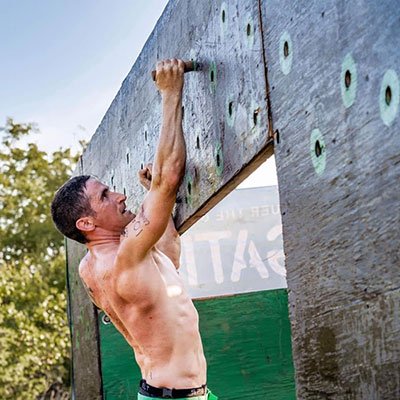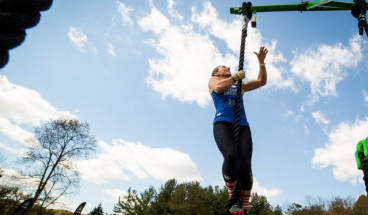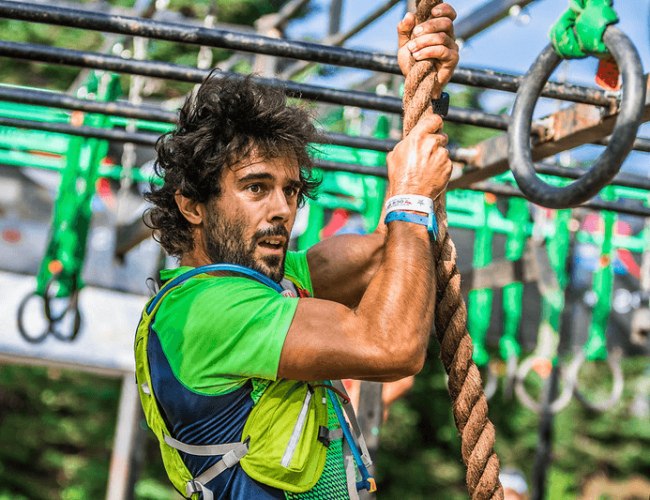
How to Train for the OCRWC: Technical Rigs
Let’s jump in the time machine for a second and go back to 2014. In Oregonia, Ohio an intrepid group of athletes found a large metal trussing with various types of grips in the low ground of a festival area. This was the first Obstacle Course Racing World Championships (OCRWC) and the technical rig spent its first couple of hours on race day morning decimating the field. That year only nine Pro women would finish the rig and keep their bands.
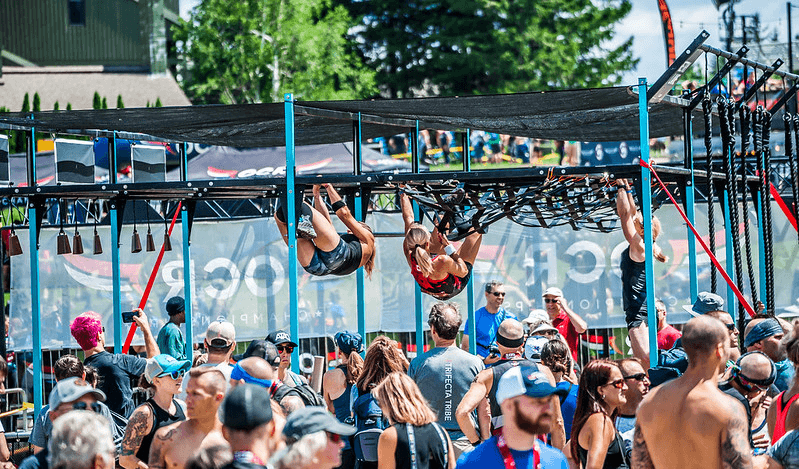 As a sport and as athletes we have come a long way since then. OCRWC now has at least five technical rigs in addition to more grip obstacles than I care to count. However, completion rates are higher than that initial year despite more grip obstacles because people are training and getting better. One of the aspects that makes the rigs so challenging is there is essentially an infinite combination of holds and configurations that can be used. Thus, athletes never know if the newest configuration will be their downfall.
As a sport and as athletes we have come a long way since then. OCRWC now has at least five technical rigs in addition to more grip obstacles than I care to count. However, completion rates are higher than that initial year despite more grip obstacles because people are training and getting better. One of the aspects that makes the rigs so challenging is there is essentially an infinite combination of holds and configurations that can be used. Thus, athletes never know if the newest configuration will be their downfall.
If rigs are still a big concern for you, here are some tips that may help you conquer your arch nemesis using a foundation of my three pillars of OCR training: Specific, Progressive and Enjoyable. While this article is rig specific, I think you’ll find many of these lessons can be applied to any obstacle that is giving you trouble:
1. Practice makes perfect
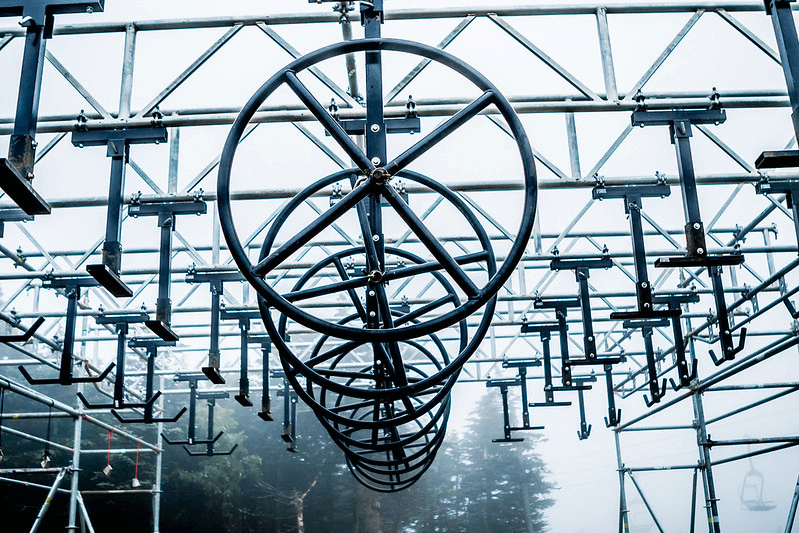
Hanging from a stationary bar is not the same thing as swinging from a rig. You need to practice movement that requires you to transition your grip and body over distance. Some gyms, like Otherworld OCR in Frederick, Maryland, USA, have permanent training obstacles, a technical rig included. If you don’t have access to a technical rig, there are lots of other options. Ideally, you can find a ninja gym in your area to practice (check Mud Run Guide’s directory here for OCR and here for ninja). If you can’t do that, a playground with monkey bars or crossbeam of a swing set works (just bring your own grips and ropes). I’ve even used the crossbeam of a pulley machine in the gym to practice movements by tying on girth hitches in fabric loops with rig holds attached.
2. Work on Rig Work First, After a Rest Day
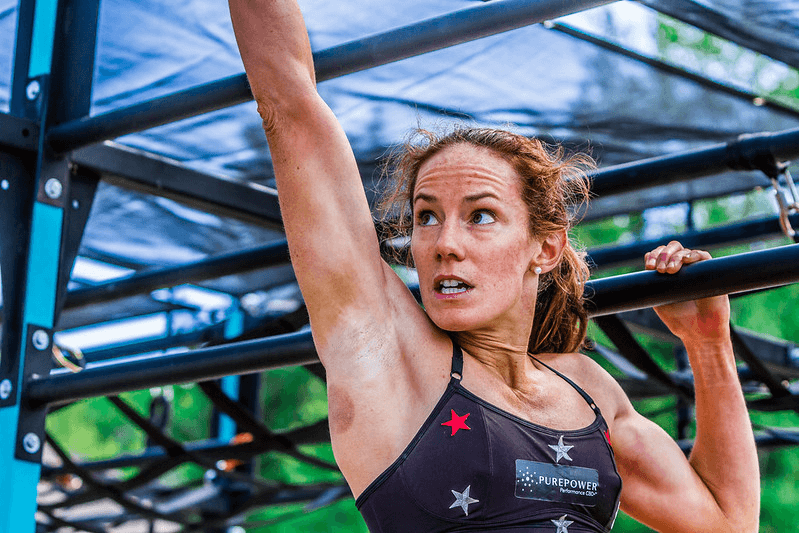
If rigs are your main concern, prioritize it. Do rig work first thing after a rest day. Don’t run beforehand or that morning, just work on your rig skills as your first exercise of the day. Once you can cross the rig, you can start adding more sets, shifting it later in your workout and incorporate running before/after you rig training.
3. Make Your Rig Work Specific

OCRWC uses Force5 holds, so train with those holds. This will get you used to grabbing the exact grips that will be present on course. It is not only specific, but it builds confidence for the race.
4. Make Your Rig Work Progressive
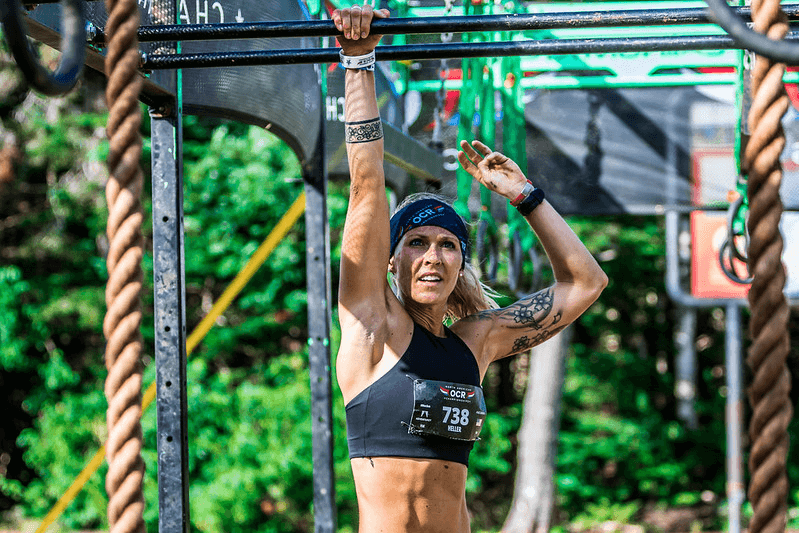
I’m about to contradict myself one sentence later, but you want your training to be progressive. Once you’ve mastered the grips that have historically been on the course, start adding in other ones that are fatter and different shapes. This not only makes you stronger but prepares you for the unknown and any curve balls the OCRWC will throw at you.
5. Study The Rig Beforehand
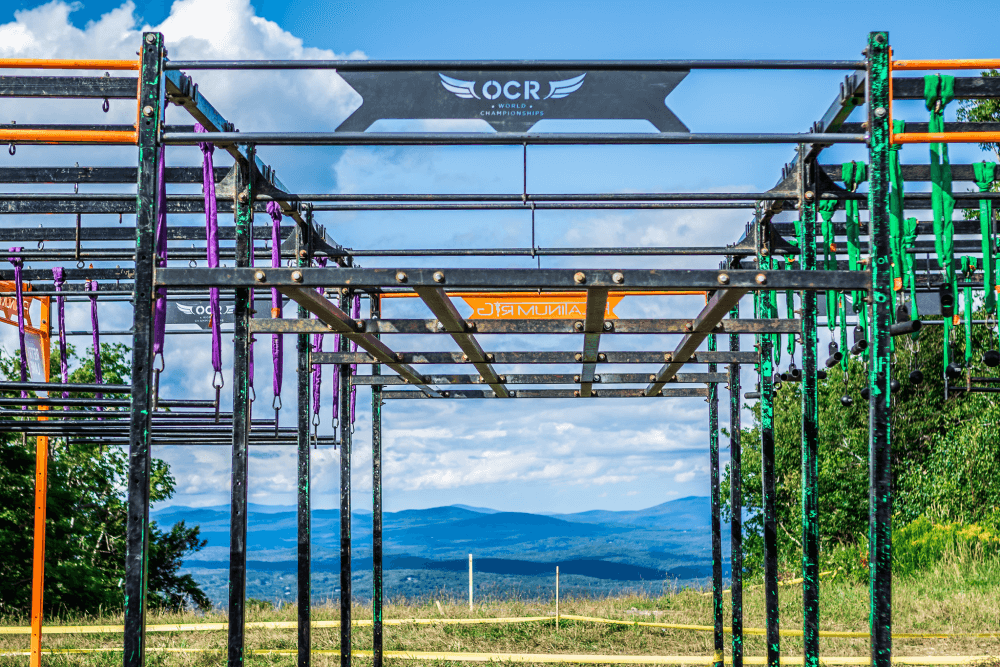
While the rules of the OCR World Championships prevent you from practicing on the rig, if you can walk to the area of the rigs (staying off the course), you are allowed to look at them. Study it, picture how you will cross it and create a plan of attack. Imagine yourself going through the rig and placing each hand on each hold thinking how you will make the next transition.
6. Watch Others
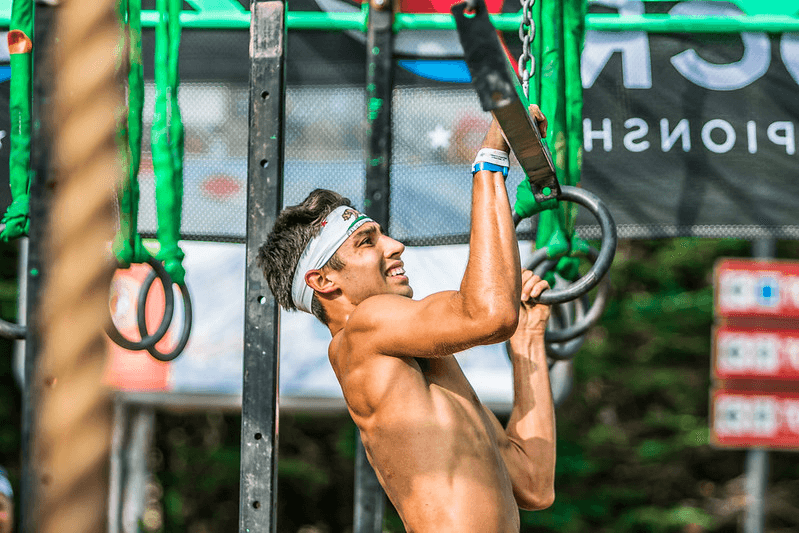
When you see someone performing an action your brain fires mirror neurons like you are performing the same action. Watch videos online of elites like Ryan Atkins, Jon Albon, Nicole Mericle, or Jesse Bruce going through the rigs. The day of the race watch other people go through the rig. Not only are you creating a beaten pathway in your brain of how to cross the rig through mirror neurons, but you will learn from other people’s mistakes.
7. Efficiency Over Endurance

I have friends who brag they can hang from a bar for three minutes. That’s impressive, however I crossed each rig at 2018’s North American OCR Championships in under 15 seconds. Those three minutes of grip strength is not necessarily needed to be successful. Rig dependent, but I would say if you are spending more than 40 seconds on the rig, you should work on efficiency over endurance. How do you do this? Mostly practice but here are a couple of more specific tips:
Touch and Go. The rules require you to touch the first hold, not hang from it or grab it. Rig dependent, I sometimes jump toward the second hold and touch the first one on my way up. That’s one less hold to hang from.
You don’t need to use every hold. If I see ring, rope, ring on the rig, I’m going to skip the rope completely and just use the rings. This is especially true with harder holds. If there is a monkey bar, nunchaku and a ring, just skip the nunchaku. To do this you are going to need to use some momentum. Instead of just hanging pull back on the last hold to swing your body forward.
Sometimes using your legs doesn’t help. We’ve all seen it. The athlete trying to lock in their legs on the rope, struggling to hold on. If you are nearing failure, absolutely lock in those legs. If you are still feeling strong, it may be more efficient to ignore the leg lock and just use your hands. It’s hard to say without seeing the exact rig we will face or where the rope or ropes are in the layout but keep this in your bag of tricks. Especially if the rope is near the beginning, you are probably going to want to skip the leg lock.
Don’t forget to touch the bell with your hands. There will be a bell marking the completion of the obstacle. You don’t need to touch the last hold of the rig, but you do need to touch the bell with your hands. Make sure you touch it before continuing your race.
8. Believe in Yourself and Attack with Confidence.
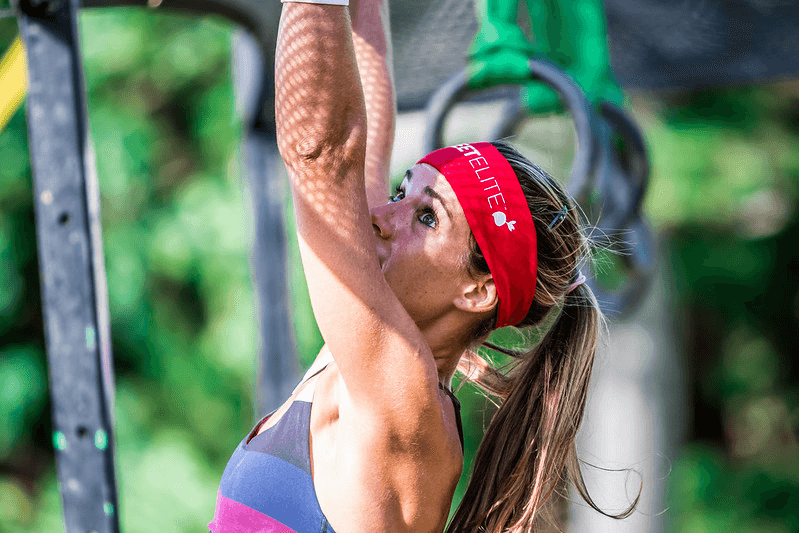
If you approach the rig and think “I’m definitely going to fail this”, you’ve already set things in motion to fail. Believe in yourself and attack the rig with confidence.
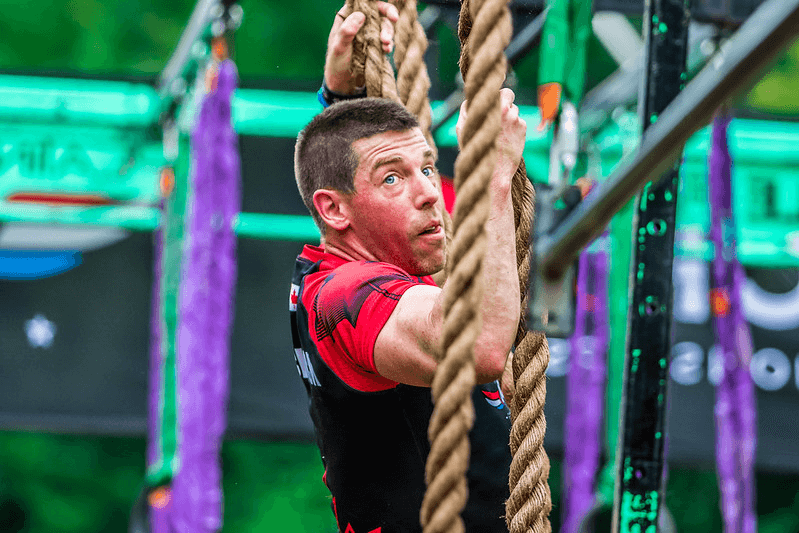
Keep training and you’ll turn one of the most feared obstacles of the course into your new favorite obstacle.
Evan “Ultra-OCR Man” Perperis, NSCA-CPT, is an athlete on the Conquer The Gauntlet Pro Team, the author of six books on Obstacle Course Racing and known for his record setting multi-day OCR events for charity. Included in his 58 podium finishes is a 2nd place Pro Coed Team at the 2018 North American OCR Championships and 1st Place Team at 2018 World’s Toughest Mudder. Find more of his content at www.teamstrengthspeed.com.
Want more great training tips? Look throughout the OCRWC Blog page for more articles in the “How to Train for the OCRWC” series and pick up a copy of Evan’s newest training book “The New Strength & Speed’s Guide to Elite Obstacle Course Racing” or if you are more ultra-focused like Evan is “Mud Run Guide’s Ultra-OCR Bible”.
